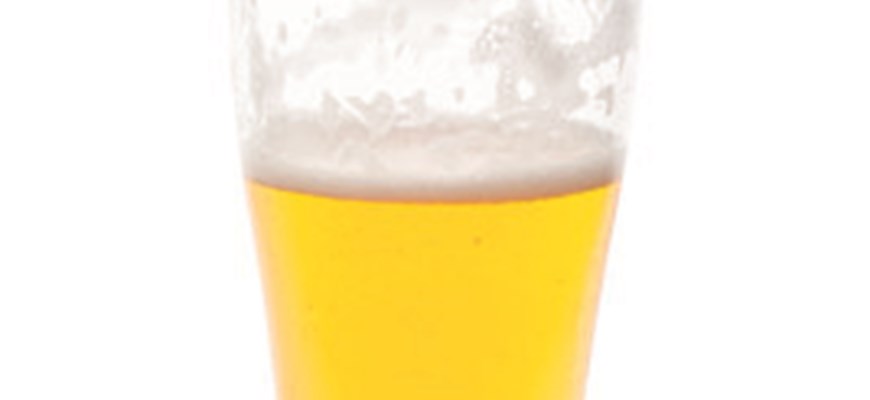
The first six months of minimum unit pricing (MUP) have passed. With many pieces of legislation, once they are on the statute book, that’s it. The world shrugs its shoulders and moves on. That cannot be the case with MUP. The Alcohol (Minimum Pricing) (Scotland) Act 2012 is unusual (though not unique) in containing what is known as a “sunset clause”. Section 2 provides that the provisions of the Act will expire six years after s 1 (the operative section) comes fully into force, unless the Scottish Government (SG) makes an order under s 2(2). The coming into force date was 1 May 2018. A s 2(2) order may be made between 1 May 2023 and 30 April 2024. If made, MUP will continue in effect.
The SG made a commitment to review the operation prior to making any decision on its continuation. This was in the minds of the Supreme Court when making its decision in the landmark case of Scotch Whisky Association v Lord Advocate [2017] UKSC 76. The court expressly stated: “The system will be experimental, but that is a factor catered for by its provisions for review and sunset clause. It is a significant factor in favour of upholding the proposed minimum pricing regime.”
Since 1 May, many have been asking precisely how this monitoring exercise will be carried out. Much of the research upon which the SG proposed the legislation was carried out by the University of Sheffield. Of necessity, the science behind such a modelling exercise cannot be exact. Those of us who have had the misfortune to watch the health lobby marshall its arguments at licensing boards and elsewhere are aware of how conclusions from existing research can be twisted and misquoted. Concern has therefore been expressed that the same team might have the task of monitoring and evaluation. “Like marking your own homework,” muttered a colleague. It must be borne in mind that very specific claims were made, for example: “Minimum pricing will save lives. In the first year alone, minimum pricing could prevent 60 alcohol-related deaths, 1,600 hospital admissions and 3,500 crimes.”
Four pillars of evaluation
It was therefore extremely interesting to listen to an address given by Mark Robinson at the recent Scottish Licensing Law and Practice conference in Glasgow. Mr Robinson is part of the MESAS Project team (Monitoring and Evaluating Scotland’s Alcohol Strategy). Part of NHS Health Scotland, this is the body which has the task of reviewing MUP in practice.
He identified four evaluation themes. The first, relating to implementation and compliance, seems to be going well. LSOs report no major issues with the trade. The next, evaluating the alcohol market, is an altogether trickier business. For example, available figures suggest that since the introduction of MUP, alcohol sales in Scotland have increased. But, over that period, we have had a very hot summer and the FIFA World Cup. Scientific method will require a control group (i.e. another comparative area unaffected by MUP). England & Wales would be the obvious one, though that could change if Wales follows our lead and also brings in MUP.
Alcohol consumption is the next factor. That’s not straightforward either. Factors to be considered include age, sex and deprivation. A common error in the methodology of reports commissioned by the health lobby is to look at numbers of shops in a particular area as opposed to capacity. Deprived areas tend to have fewer large shops and supermarkets. They also, invariably, have higher levels of alcohol- related issues. This has led some to draw the fatuous conclusion that a greater number of outlets results in greater levels of harm. The one credible piece of research of recent years is at pains to point out the complete lack of causal connection between the two. Forgive this slight tangent. I am sure Mr Robinson’s team won’t regurgitate such rubbish.
Finally, they will look at health and social harm. This will include statistics relating to crime and public safety, hospital admissions, and deaths.
Proper tonic
It will be interesting indeed to compare the actual figures with the model ones. In the meantime, there is already one example of the law of unintended consequences. Everyone expected that sales of strong cider would slump, as indeed they have. How many predicted that sales of a well known product which is made by monks in the south west of England and whose nickname shares the name of a north east fishing village, would be going through the roof?
In this issue
- Brexit: prepare for impact
- Continuity and compatibility
- The Disability Convention: clearing obstructions
- Policing review: the priorities
- Five investment practicalities for lawyers managing trusts
- Reading for pleasure
- Opinion: Aamer Anwar
- Book reviews
- Profile: Serena Sutherland
- President's column
- People on the move
- Lifting the lid on the law
- The article 50 case: how it happened
- Forum for business
- Relevant persons: an alternative
- Three ways to enhance digital innovation
- Brexit north of the border
- Roberton – a way forward?
- Interest that runs for years
- Minimum pricing: what next?
- A bill not as planned
- Consumer contracts, choice of law and time bar
- Entrepreneurs' relief: tightened too far?
- Scottish Solicitors' Discipline Tribunal
- In the name of justice
- Views from the bar
- Design the Journal front cover!
- Public policy highlights
- OPG update
- Police station interview training – an update
- Easier caution with Marsh online service
- Fantastic locums – and where to find them!
- Navigating competencies
- C1s – why they bounce
- Conference content?
- Turn on the black box
- Ask Ash







